Located in the Rosette Nebula which lies in the constellation Monoceros we can find one of the very youngest magnetic upper main sequence stars, NGC 2244. NGC 2244 also known as Caldwell 50 or the Satellite Cluster is an open cluster star estimated to be less than 5 million years which was discovered by John Flamsteed in 1690. This cluster is said to contain several extremely hot blue-white stars that generate large amount of stellar wind and radiation exceeding temperatures of 30,000K (kelvin) known as O-type stars.
In 2023, a study found that in NGC 2244 star cluster brown dwarfs tend to form closer to OB-stars than to other stars, this is explained through photoevaporation (the process where energetic radiation ionises gas causing it to disband from the source) of the outer layers of prestellar cores. Additionally, the research showed that only 39±9% of low-mass objects, later than K0 in the cluster have disks around them.
Using Skynet I collected 15 images in total all within an hour between each image, 5 images in B filter with exposure durations of 32.28s, 5 images in V filter with exposure durations of 28.35s, and R filter with exposure durations of 12.6s through their Prompt 6 telescope located in Cerro Tololo. I then used Afterglow to extract all sources of light in the image and via photometry attained data’s needed such as dec, ra, zero point, flux, and many more for the next step of the process, and also create a tri-colour image of the star.
Using the B, V, and R filter shown below I was able to create an apparent tri-colour image of NGC 2244. Figure 1
| B | V | R |
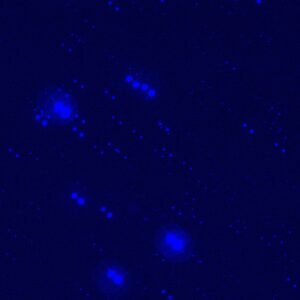 |
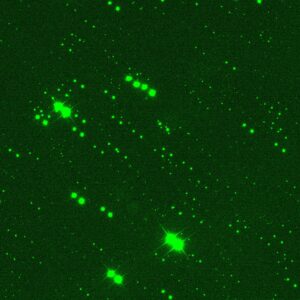 |
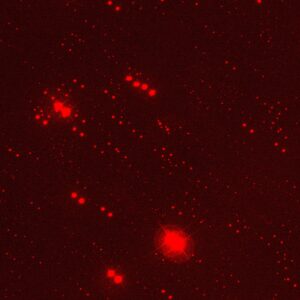 |

As mentioned earlier after obtaining the data from Afterglow, Cluster Astromancer is then used to obtain more data about my star, through the process of field star removal, archive fetching, and isochrone matching. These basic values about the star was obtained
| Estimated PM RA | Estimated PM Dec | Distance | Log(Age) | Age | Metallicity | E(B-V) |
| -1.72 (mas/yr) | 0.14 (mas/yr) | 1.46 (kpc) | 6.6 log(yrs) | 3.98 (Myrs) | 0.2 (solar) | 0.6 (mag) |
Using the E(B-V) value we go back to Afterglow to get a de-reddened/real image of our star. Figure 2
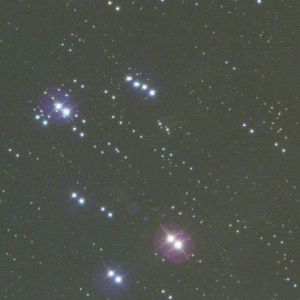
All of this process was done in order to study NGC 2244 and investigate the relationships between the colours, brightness’s, and the age and chemical composition of the cluster as a whole.
NGC 2244 was studied by Kharchenko et al (2013), who found parameters. Using these parameters we can compare the difference between the Gaia data I found and what Kharchenko found. Using the parameters I found these graphs were produced.
| RP vs BP – RP | V vs B – V | R vs B – R | H vs J – H |
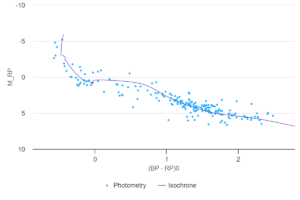 |
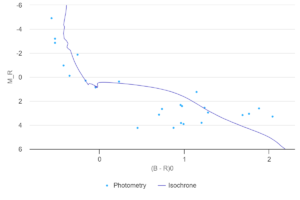 |
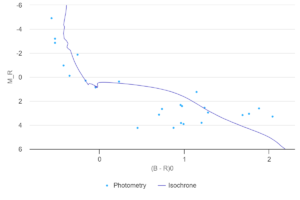 |
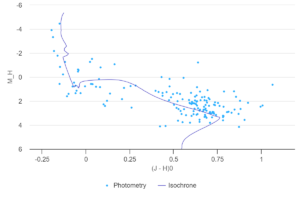 |
Using Kharchenko’s values (row 331), these graphs were produced.
| RP vs BP – RP | H vs J – H |
 |
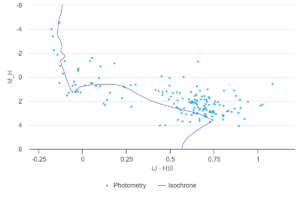 |
As you can see from the two graphs, both are extremely almost similar with just a few adjustments. No parameters were poorly estimated, all of which are somewhat similar with a 0.5 ish difference.
Having completed my analysis, I have learned a lot more about our solar system and about stars which is really exciting. I used to think that stars were boring and just look like a dot light but being able to view images of different stars and learned about various things about the stars such as distance, luminosity, parallax, etc. I was in disbelief about how little I know about our world, this class has been a blast an exciting one at that all the labs were cool and really fun to do. This has inspired me to expand my learning and learn more about our world and how things came to be.